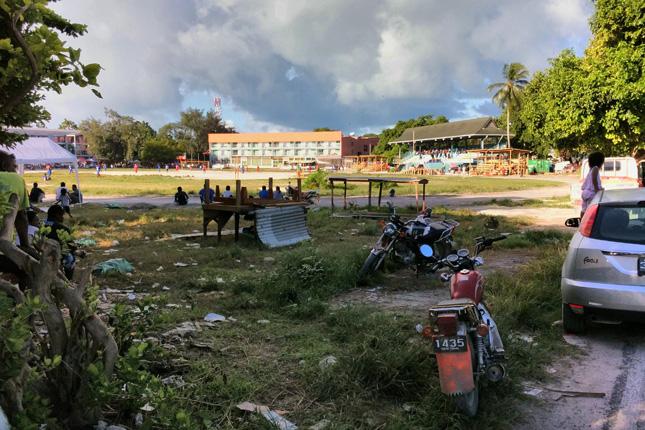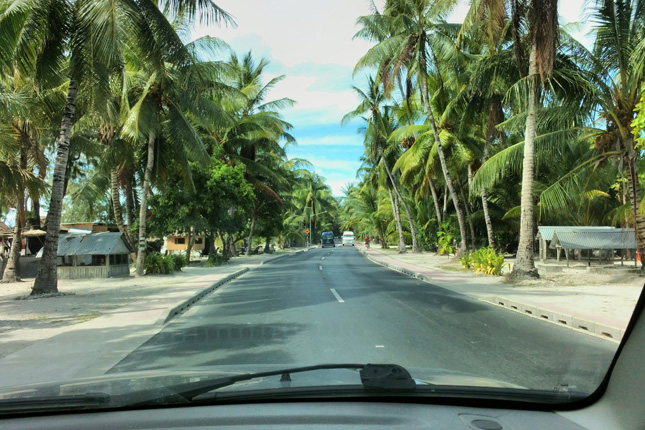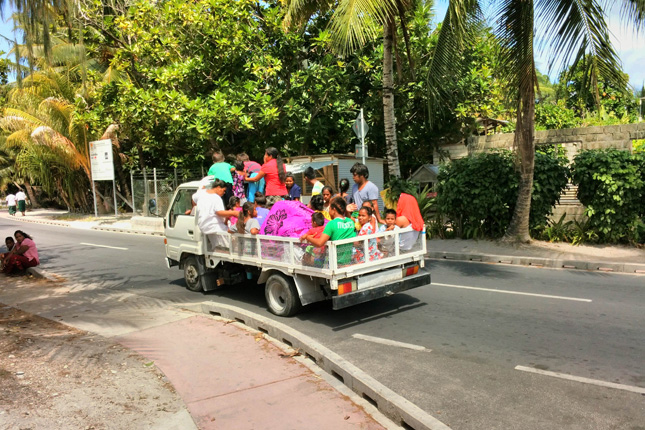-
Panacea for the Pacific? Evaluating Community-Based Climate Change Adaptation

The Australian government’s recent Foreign Policy White Paper has been criticized for its underwhelming climate change section. Penny Wong, the current opposition leader in the Australian Senate, said that its acknowledgement of the need to support a more resilient Pacific region “rings hollow in light of the Abbott/Turnbull Government’s massive aid cuts.” But despite these criticisms, the Australian government continues to support a range of climate change initiatives in the Pacific. Increasingly, Australian Aid and its fellow donors, including USAID, JICA and GIZ, take a community-based approach to climate adaptation. Germany’s GIZ, for example, carries out community-level adaptation activities for all beneficiaries in the Pacific; and USAID has highlighted its community-level projects as important models. Our recent evaluation of some of these community-level adaptation programs in Vanuatu and Kiribati found that they provide some development benefits, including increased awareness, empowerment, cooperation, and self-esteem, but that it is too soon to tell whether this approach can reduce long-term vulnerability to climate change.
As the Climate Changes, So Does the Way We Respond
Even if global emissions stopped today, the IPCC predicts that we would continue to feel the impacts of climate change for centuries, so adapting to unavoidable impacts is a key component of aid programs in the Pacific. How we will adapt, however, has evolved, with donors and practitioners shifting from ineffective “top-down” approaches driven by experts, to “bottom-up” interventions like community-based programs that involve greater participation by local stakeholders.
Researchers theorize that community-based adaptation can more effectively increase resilience, but does it actually work in practice? To understand whether externally funded community-based adaptation programs can reduce vulnerability and increase resilience, we conducted focus groups and interviews across six communities in the Pacific island nations of Vanuatu and Kiribati to measure local perceptions of the appropriateness, effectiveness, equity, impact, and sustainability of these activities.

Appropriate Community-Based Adaptation Improves Awareness
In Vanuatu, we found that the information provided by community-based adaptation programs was especially effective. Communities in the program gained a better understanding of climate change, recognized the need to adapt, incorporated adaptation into their daily lives, and reported an increased ability to cope. These results show that raising awareness is critical for reducing vulnerability. On the other hand, the lack of awareness activities in Kiribati was identified as a missed opportunity and was cited as an area for improvement.
For the most part, we found that adaptation activities were appropriate for the local contexts; they were delivered in local languages and catered to existing levels of skills and knowledge. In Vanuatu, the projects also consistently addressed the communities’ most pressing needs, such as food security. But we did find some room for improvement: Local knowledge was often not integrated into designs, and activities were not always aligned with the participants’ existing schedules. And in Kiribati, the project activity did not address the community’s primary concern, which was water insecurity.
Programs Found Lacking in Equity and Sustainability
The level of equity was highly variable across the adaptation programs—and a clear area for improvement in program design and implementation. In Vanuatu, the communities largely perceived the programs as equitable, likely due to their gender-inclusive measures and consideration of pre-existing inequalities. Exclusions, however, persisted; those with lower levels of education, the elderly, and members of a particular religious minority group were left out (an important reminder that we must not overlook religion when working in the Pacific). In Kiribati, men also felt excluded from activities.
Although some participants in Vanuatu believe that the programs’ trainings and practical demonstrations built their capacity to continue activities without support, we found an overall negative perception of the long-term sustainability of these programs. The activities’ short-term nature, the projects’ insufficient agricultural output, and a lack of ongoing support from implementing organizations demotivated participants and led them to prioritize other commitments. Furthermore, we also found that the communities were often overly dependent on outside aid to continue the projects, presenting a significant hindrance to successful community adaptation into the future. As these activities were still relatively new when we evaluated them, it is particularly worrying that issues with sustainability emerged so soon after implementation.

Adaptation: An Effective Development Tool?
The community-based approach to adaptation—like other development-focused adaptation programs—ensures that regardless of the future climate change scenario, there are some positive, development-related improvements. Our findings reflected this: Although project outputs included many failures, the projects always provided some benefits, including, for example, increased empowerment, community cooperation, and self-esteem, as well as short-term benefits in income and health.
However, it is too early to determine whether community-based adaptation can effectively reduce long-term vulnerability. We need ongoing monitoring and evaluation to assess long-term performance. And due to its local nature, the impacts are highly contextual. We also need to evaluate activities in other vulnerable regions, as well as in other countries in the Pacific, to reach a universal understanding of whether community-based adaptation works. Sharing best practices from these studies will be crucial for the effective use of future resources by NGOs, donors and governments.
Based on our research, we recommend that donors and program designers should:
- Better understand and integrate local contexts in design and implementation;
- Use more participatory processes and integrate local knowledge into design stages;
- Focus on and effectively implement awareness activities; and,
- Support longer-term projects.
One thing is certain: We need to act on climate change in the Pacific. By moving away from the ineffective top-down processes of the past, community-based adaptation programs offer new hope. But are they really the panacea for effective future adaptation? Only time will tell.
Rachel Clissold is studying a Bachelor of Environmental Management and a Diploma in Global Issues at The University of Queensland, and is passionate about exploring the interactions between socio-cultural dimensions and environmental change, with a particular interest in Southeast Asia and the Pacific Islands.
Tahlia Clarke studied a Bachelor of Environmental Management at The University of Queensland, with a focus on sustainable development and climate change adaptation, which remain Tahlia’s key research interests.
Benjamin Priebbenow studied a Bachelor of Science (majoring in Geography) at The University of Queensland with a focus on the evaluation of community-based climate change adaptation in Kiribati for his final year thesis, and his research interests revolve around concurrent climate change adaptation and development strategies.
Karen E McNamara is a Senior Lecturer in the School of Earth and Environmental Sciences at The University of Queensland, where she undertakes research on how environmental change impacts people’s livelihoods and how social systems can respond to such change.
Sources: Australian Government Department of Foreign Affairs and Trade, Climatelinks, The Conversation, GIZ, Intergovernmental Panel on Climate Change, Japan International Cooperation Agency, Local Environment, U.S. Agency for International Development
Photo Credits: Taken by Benjamin Priebbenow in Kiribati
A soccer game is played in the distance at Bairiki National Stadium, as part of Kiribati Independence Day celebrations.
Driving along the main road in South Tarawa.
Some transport in South Tarawa. Vans and small trucks are very popular for transporting many people.
 A Publication of the Stimson Center.
A Publication of the Stimson Center.





